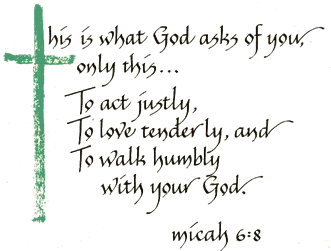catholicPittsburgh.org is the place for information, news, commentary, reflections and community building among the people of God who are renewing the Catholic Church in Western Pennsylvania.
More about us
Welcome ...
Partnering Groups
The following organizations are partners with catholicPittsburgh.org:
The Second Vatican Council--Third in a Three-Part Series
By John Houk
If the first two parts of this series did not succeed in getting you (the reader) interested in reading the documents of Vatican II, then beware that I intend to try one final time. First, I tried to appeal to your intellectual curiosity and one’s desire to live a reflective faith. My second appeal was an attempt to draw you in with the Council’s own spirit of promoting everyone’s participation. If those approaches didn’t get you to open the book or web site on these documents, then I want to tell you that there are powerful people who want to take it all away.
Many of us have gotten Vatican II by osmosis. The spirit of that Council has just crept into our lives and became part of who we are. The reverse can happen, is happening, the same way; at least that is what some people in Church leadership positions hope.
Here is how this is happening. There is a clear hierarchy to Church documents. For example, there is a “Constitution on the Sacred Liturgy” as part of the Documents of Vatican II. Subsequently there have been 20+ “Instructions” on implementing this Constitution, some of them reversing the instruction of the one before. There are then papal pronouncements, letters, public addresses, etc. Typically these are the documents being used to take us backward (some refer to this process as “restoration” and the people involved as restorationists). It follows that if we do not know the source documents (typically the Council documents) then we have no defense against the “restorationists” who happen to include our recently departed John Paul II.
What good is it to know what is happening if we can’t do anything about it? Well, there are several reasons that we should not be silently pushed backward into pre-Vatican II patterns. Personally, I don’t like being treated like a dumb sheep regardless of the scriptural references. (Vatican II did that to me.) If the key to understanding the Council is hearing the call to participation, then silence is not appropriate. Even the Code of Canon Law (Revised after the Council) says that lay people have the “right and duty” to bring their issues to the attention of the pastor/bishop (canon 212.3). The hook in this canon is that it qualifies those who have the right and duty to speak as those who are “competent”. This makes sense, but doesn’t that encourage, if not actually require knowing what the Church documents say?
A simple example of what “participation” can achieve is when John Paul II said no altar girls. No. No. No. A few years later, after many pastors did it anyway, and lightning didn’t strike them down, John Paul II said O.K., if the local bishop says it’s O.K. Now it is O.K. almost everywhere. Would you be accepting if altar girls were no longer allowed? The source document from the Council spoke of firing up our participation, not putting restrictions on participation. We are facing the same problem again with the latest “Instruction” that says only the priest can go to the tabernacle, only the priest can purify the sacred dishes, etc. etc. What does this new direction say about lay participation in the minds of restorationists?
The Spirit will have her way and the inspiration of the Council will become reality, but the key is that this will happen only with our competent Spirit-filled participation. You can find the Constitution on Sacred Liturgy on www.vatican.va. I once again invite you to read the documents for you own sake and the children’s.
- By JoanHouk at May 20 2006 - 5:04pm
- Articles
Micah 6:8

©1996 Cards by Anne
Used with permission